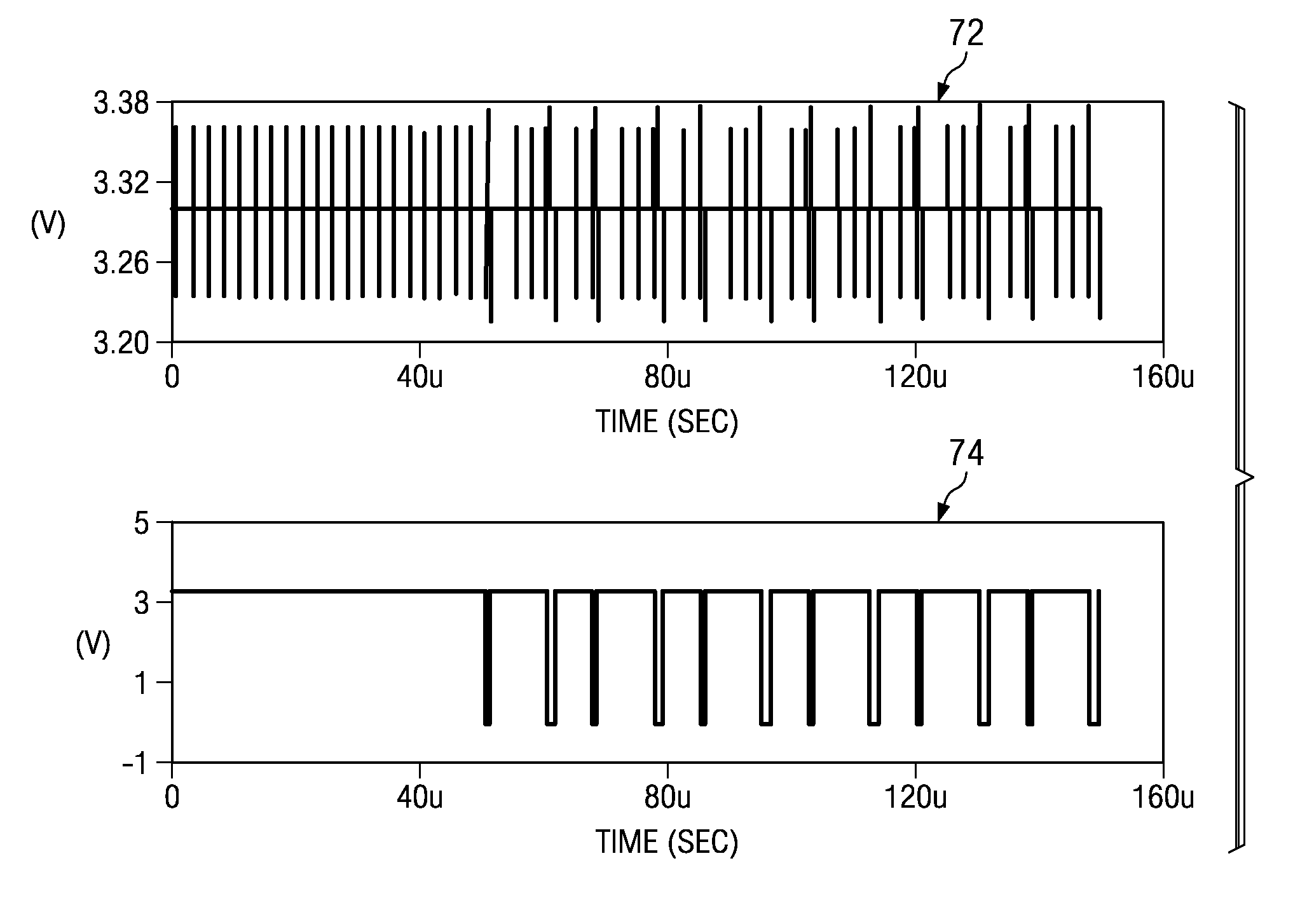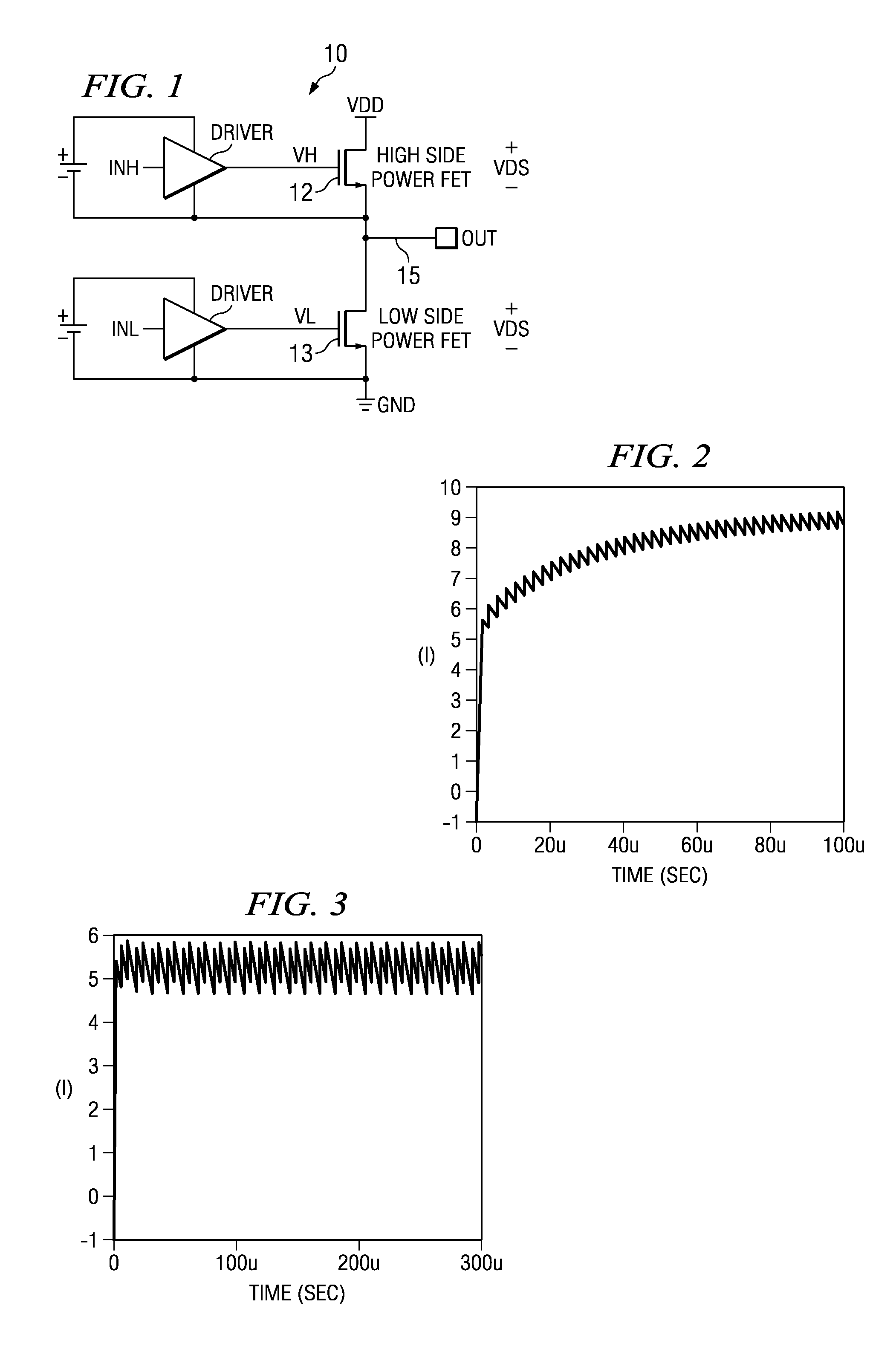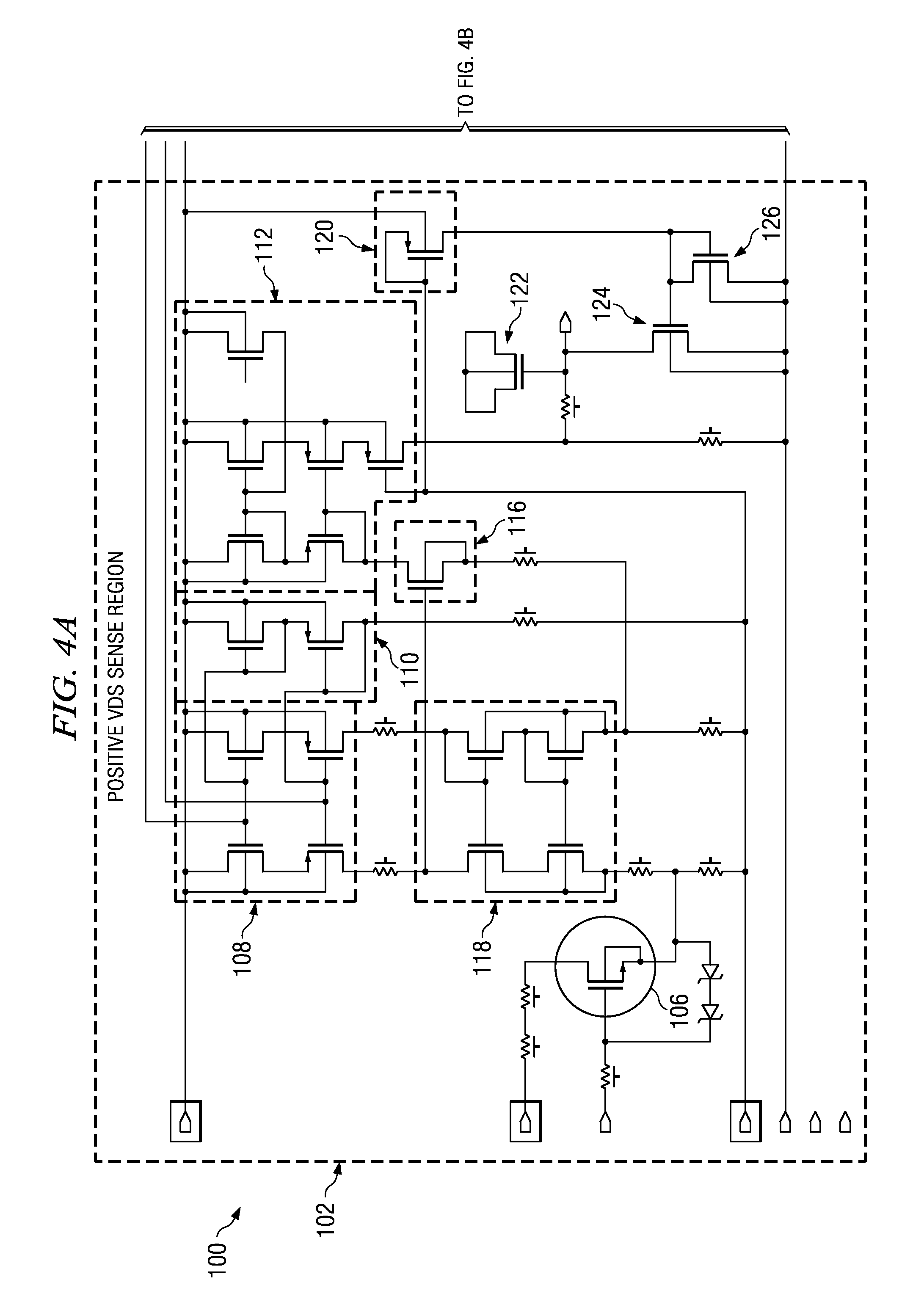Transistor overcurrent detection circuit with improved response time
a detection circuit and overcurrent technology, applied in the direction of electrical equipment, electronic switching, pulse technique, etc., can solve the problems of increasing current that builds, reducing the detection efficiency of overcurrent detection, and reducing so as to reduce the overall overcurrent detection size, the effect of doubling the functionality
- Summary
- Abstract
- Description
- Claims
- Application Information
AI Technical Summary
Benefits of technology
Problems solved by technology
Method used
Image
Examples
Embodiment Construction
[0035]Referring now to FIG. 1, a circuit diagram of a switching half bridge is illustrated as circuit 10. Circuit 10 includes a high side FET 12 and a low side FET 13, that provide a switched output at a common node 15. Node 15 is typically connected to a load that can be inductive. When FETs 12 and 13 are switched using a PWM control arrangement, the voltages across the drains and sources of FETs 12 and 13 can be positive or negative, related to current flow in FETS 12, 13. When the voltage is positive, as indicated by the polarity on the outputs of FETs 12 and 13, voltage Vds for FETs 12 and 13 is positive and current flows in a positive direction from (+) to (−). An overcurrent detector can be connected to FETs 12 and 13 to determine current through the FETs based on the positive voltage Vds. Conventionally, an overcurrent sensor would detect the positive voltage Vds to measure the current through the corresponding FET. Accordingly, such an overcurrent detector would work when th...
PUM
 Login to View More
Login to View More Abstract
Description
Claims
Application Information
 Login to View More
Login to View More - R&D
- Intellectual Property
- Life Sciences
- Materials
- Tech Scout
- Unparalleled Data Quality
- Higher Quality Content
- 60% Fewer Hallucinations
Browse by: Latest US Patents, China's latest patents, Technical Efficacy Thesaurus, Application Domain, Technology Topic, Popular Technical Reports.
© 2025 PatSnap. All rights reserved.Legal|Privacy policy|Modern Slavery Act Transparency Statement|Sitemap|About US| Contact US: help@patsnap.com



